
Chaozhou Hall: A place to visit in Hoi An
- on Sep 8, 2019 By: Ngoc Nguyen
Hoi An, the timeless old city has remained nearly untouched to the delight of visitors who come to admire its tremendous cultural and architectural heritage. Walking around the city is like taking a trip back in time to the period of the 15th-19th century. Also known as Faifo, Hoi An was a very active port on the commercial sea route in Southeast Asia.
Chinese, Japanese and Europeans all had come here to trade. Although many decided to settle down and build beautiful wooden houses combining several architectural styles. There were buildings for specific cultural and spiritual activities for the whole community which were known as the assembly halls or congregational halls. Among these buildings which make up the rich culture of Hoi An include Hoi Quan Trieu Chau or the Chaozhou Hall. This building is a perfect example of the exotic mixture of cultures in the glorious era of Hoi An.
History of Chaozhou Hall
This hall was built relatively recently in comparison with some of the other older houses and ruins of Hoi An. This building specifically testifies to its rich history. The Chaozhou Hall was built in 1845 by families living in Hoi An from Chaozhou, a town in the far east of the Guangzhou Province in China. The hall was built in 1845 to worship Phuc Ba Tuong Quan who is known as the great general peacemaker of the sea, they would pray for him to be lenient toward sailors who were about to go to sea. All of the families believed in the whimsical nature of the sea as their lives depended greatly upon its resources. It was very important to ease the spirits before setting off on the unknown and feared oceans.
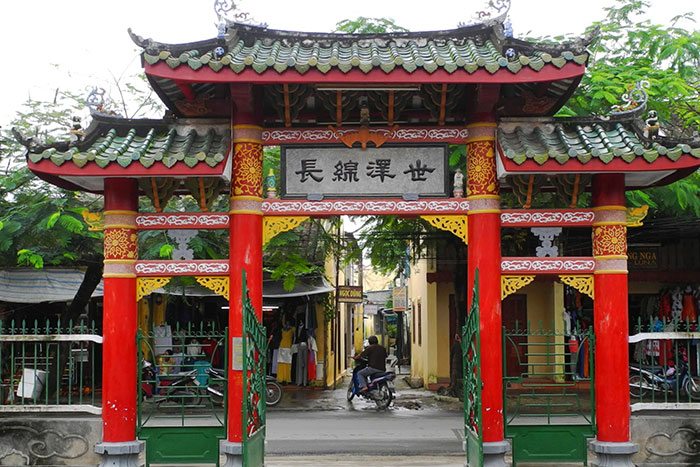
The Cantonese community called this hall “Am Bon” because on both sides of the altar dedicated to Phuc Ba was the altar of the god of fortune and the god of happiness. The community came to make offerings so they could receive loans for their businesses.
The Chaozhou Hall in Hoi An is the spiritual rendezvous spot for Cantonese expatriates to share and preserve their cultural traditions from China. Not only does it serve as a place of worship but it also preserves their distinctive cultural identities.
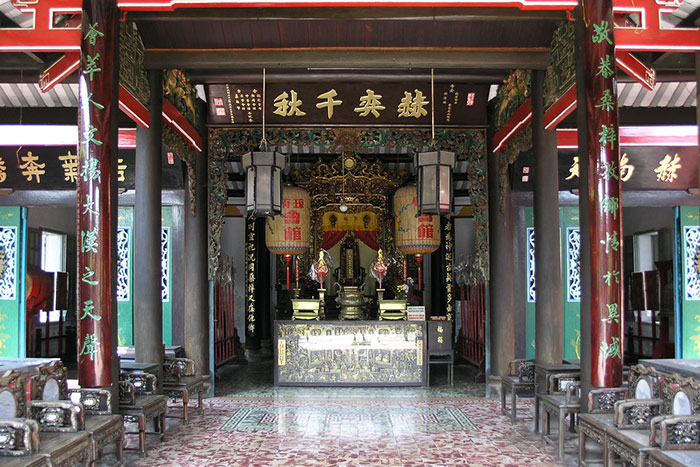
Architecture of Chaozhou Hall
While the vast majority of buildings in Hoi An ancient town are made with the local materials, the Chaozhou Hall was built with almost all of the building materials being imported from China such as tiles, interior ornaments and all kinds of beautifully carved wooden furniture.
The room is a sophisticated structure with a finely carved wooden frame, patterns decorated as images tell fairy tales. The Chaozhou Hall is an exhibition of exquisite porcelain which represent the artistic talent of the craftsmen of ancient times. The beautiful friezes in painted carved wood reveal wonderfully detailed images of dragon heads, flowers and the daily life of the people. This work is quite remarkable and beautifully well preserved.

The meeting room is located in the inner courtyard and has the shape of the character "Nation" comprising of a three-door entrance, the large front yard with bonsai, the east and west rows of houses, the courtyards, the main hall and the choir. The harmonious architecture of wood and stone in the supporting structure and the decorative patterns gives the assembly hall a surprisingly impressive beauty. The Cantonese meeting room retains many valuable antiques including four large horizontal lacquered boards and a large incense burner 1.6m high and 0.6m wide with a porcelain base made of Chinese celadon.
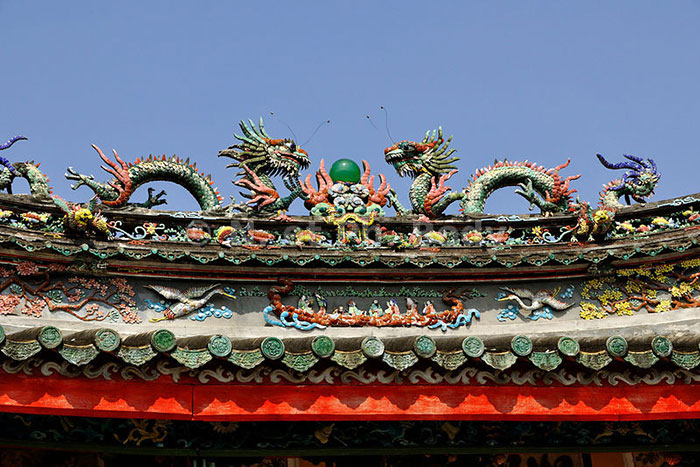
Festivals at Chaozhou Hall
Every year, the descendants of this Cantonese community who once founded this place gather in the hall from the 1st to the 16th of the first lunar month to express their gratitude toward their ancestors. It is also a celebration which expresses the strong attachment of this community to its cultural roots.
During these festivals, if you have the chance to go you will notice the flag of the Chaozhou Hall festival. The flag has 5 colors (or Cờ Ngũ Hành) indicating the five primary elements in Chinese philosophy which they believe are the basis of everything. Red represents fire, yellow the earth, green the wood, white the metal and blue (or black) the water. You should know that each color is also associated with a direction: blue for the north, white for the west, green for the east, red for the south and yellow for the center. The center of the world in Chinese thought is China; Vietnam is the south which corresponds to the etymology of the name Viet Nam meaning: the Viets in the south. The red color is therefore very suitable for the Vietnamese flag.
Related articles:
>> Tra Que Vegetable Village, destination of choice in Hoi An
>> Hoi An, a famous ancient town of Vietnam
>> Ha My, a beach in Hoi An in the top most beautiful beaches in Asia
>> Top 7 things to do in Hoi An
>> Top 10 addresses to explore Hoi An culinary culture that you should not miss out
 Español
Español Français
Français







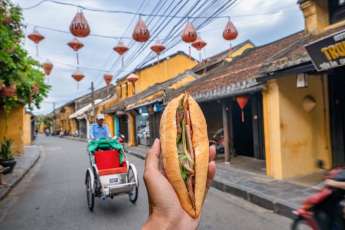

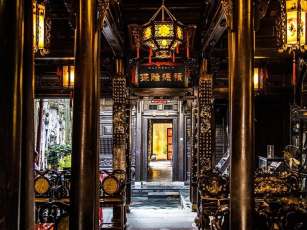

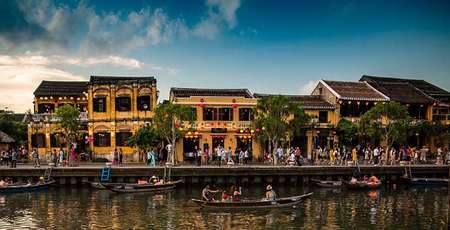
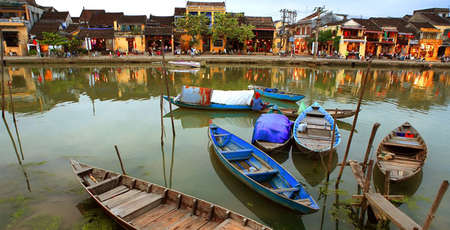







Morgane Ter Cock
on Dec 18, 2025HerbertPhomaMS
on Oct 19, 2025Lilyan Cuttler
on Oct 15, 2025Avenue17XC
on Sep 14, 2025Avenue18JL
on Jul 21, 2025